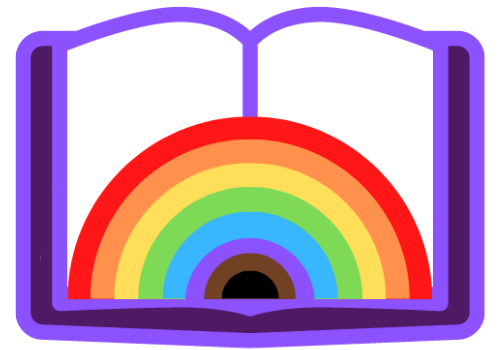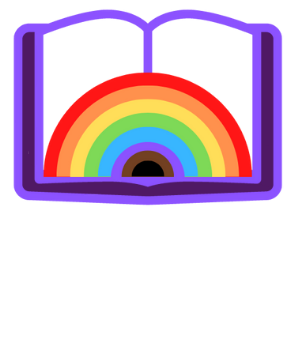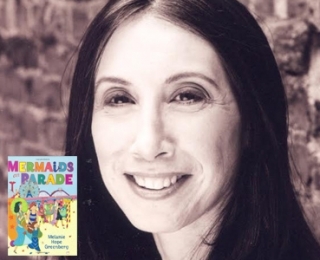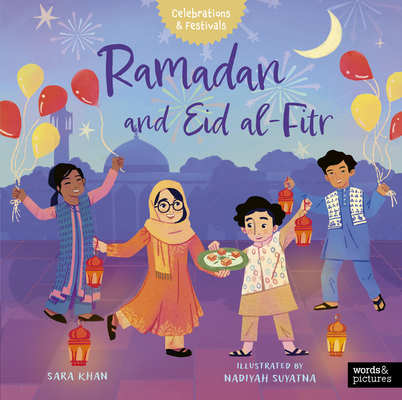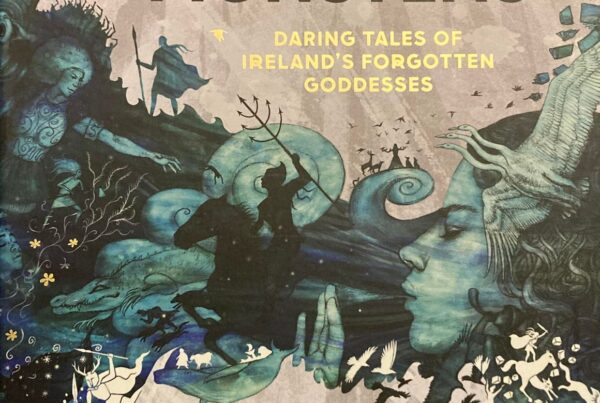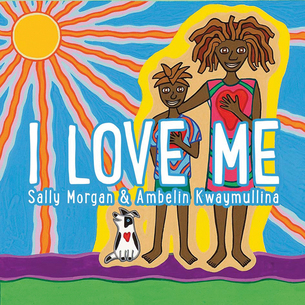In this interview we have the pleasure of talking to children’s book author and illustrator Melanie Hope Greenberg.
She talks about her community work, the fantabulous event that is the annual Mermaid Parade, and, of course, her books!

You have a very impressive background and have been part of so many community organizations! Can you tell us more about yourself?
Thank you for that intro!
It was by lucky circumstances when I hooked up with the publishing professionals who would help me succeed as a picture book artist. There weren’t many schools teaching the picture book illustration craft back in the 1980s, as there are now.
Much of my process skills were honed at meetings with my agent. I learned by osmosis while creating early drafts to sell to publishers that I’d write, or by illustrating a book I sold, or by illustrating books written by another author.
My first publishing jobs were creating greeting cards. Again, I was lucky, because my publishing career led to other freelance jobs illustrating magazines, poster art, more greeting cards, etc.
I’ve been an arts professional since 1981, starting out of the gate with UNICEF greeting cards. I have since archived over 1,700 original illustrations.
Nowadays, I consider myself semi-retired in that I’ve slowed down the output of new art and am looking to sell existing originals and print illustrations, but never say never.

I love that you work so closely with the schools and libraries in your area. I would love to hear about your experiences in the community.
I’ve been visiting schools and libraries since 1991. I’ve traveled all over NYC as well as traveled out-of-town to meet young students. The library has been such a great friend to me. Besides presenting workshops for the library’s programming calendar, and visiting schools or branches, many parents tell me that their children borrowed my books so many times they just had to ‘buy the book!’ 🙂
The most wonderful part of visiting elementary students is their loving energy as well as their honesty. They ask questions which are intelligent, funny, and poignant. Also, as a native New York City resident, I find it fascinating visiting neighborhoods that are off the beaten path, and logistically finding the subway routes to get there. These are the neighborhoods that mostly include very diverse student populations. It’s really uplifting to see.
The most wonderful part of visiting elementary students is their loving energy as well as their honesty. They ask questions which are intelligent, funny, and poignant.
-Melanie Hope Greenberg

What inspired you to write MERMAIDS ON PARADE?
I was inspired to write MERMAIDS ON PARADE based on a real life experience. In 2005, I was invited to march in the Coney Island Mermaid Parade with a performance troupe called the Superfine Dinettes. I jumped at the chance.
Superfine is a restaurant and art gallery with a performance stage, a pioneering space in Dumbo, Brooklyn, now an arts hub in that community. I knew about the Mermaid Parade but had never gone before.
A mermaid parade also sounded like a fun idea to write about with its childlike themes of amusement parks, cosplay, and glitter. I researched Coney Island history and interviewed members of the Dinettes about their former parade experiences.
Those interviews led to the major theme of the book, and to the main character’s catharsis: a shy mermaid who comes out of her shell.
Members of the Dinettes taught me how to make a mermaid tail at their ‘Tail Factory.’ We rehearsed our dance number for the parade at Superfine when it was closed.
In 2005, the Dinettes were going as the ‘MerMod Squad’ and shimmying their way down Surf Avenue to the ‘Hawaii-5-O’ theme song, you know, from those kitschy 1960’s TV detective shows. Superfine rented a bus to take us from Dumbo to Coney Island and back. Unfortunately, I had broken my toe close to the parade date so I didn’t do the dance number. Lucky me, I was able to take photos of the costumes and dancing during the parade as I hobbled along.
All of that became the book. The dancing poses and costumes from my photos, the party bus, real life friends, the tail making, and the parade history.
Usually, a thirty-two page picture book is designed to start on pages 4/5. But, there was so much information to include in this book, I started designing on pages 2/3, leaving space for the tail-making activity and author’s note with the parade’s historical background.



Readers that have never been to the Mermaid Parade in Coney Island really get a feel for this special day because of the vividness and excitement in your illustrations. When you wrote this book, did you have those people in mind?
I mostly have children in mind when I craft a story. For me, MERMAIDS ON PARADE is about a child’s-eye view of joy from experiencing something wondrous for the first time. Lucky me, it was also my first time marching as a mermaid, so it was not too hard to express those feelings plus the colors of the parade. My art sensibilities are inspired by my childhood in the 1960s, the psychedelic honky-tonk of Coney Island was a perfect marriage. I’ve heard from so many parents, librarians, and teachers throughout the years that they never weed my book. This feedback helps me to understand the book’s place on the bookshelves and in people’s hearts.
The story remains ever fresh and the vivid detailed art still lend themselves to children of all ages. That is very satisfying.


There is so much diversity, including gender diversity, illustrated in Mermaids on Parade. Have you ever gotten any backlash for being so inclusive?
No. Whew! I do believe that the book goes under the radar because I painted what I actually saw at the parade. Transgender folks were a natural part of the parade — a part of the natural fabric of life having a fun day by the beach in Coney Island. Everyone marching in my book are too busy enjoying life to be prejudiced.
I painted over 100 characters in MERMAIDS ON PARADE; their personas and costumes were created from real life people and from the photos I took.
Historically, the rise of the Coney Island amusement parks reflected the growth of American history, culture, and democracy; and NYC acknowledged diverse cultures. Another theme of the book — democracy — is best depicted in the scene of the Mermaid Parade’s annual ritual of throwing fruit into the ocean. That scene is my most idealistic view of Coney Island’s history — blended with my artistic informed view: the Atlantic as the ‘Ocean of Consciousness’ where everyone belongs and exists together equally.



What advice would you give a family who is planning a journey to such a fabulous event?
I suggest to go to the earlier part of the parade for the parents and children to either watch, or you can register to be in the parade with your children. You might want to prep the visit by pointing out the places of interest they will recognize from the book such as the Parachute Jump, The Cyclone Roller Coaster, and the Wonder Wheel. If you want to dress up as a marcher or even as a spectator, even better! Don’t forget there’s a mermaid tail-making activity included in my book.

Mermaids on Parade isn’t the only book people can find in their library that you wrote. Can you tell us about your other books?
I’ve published seventeen picture books with many top publishers. I’ve illustrated all of those books, and written six of them. I am so proud to have had most of my books catalogued into public library systems all over the US. I consider myself more of a visual artist than a writer. The art always come first; if a manuscript calls for it, I try to create illustrations which transcend the text.
AT THE BEACH was my first book with Dutton / Penguin released in 1989.
My next book with Dutton was MY FATHER’S LUNCHEONETTE, based on my real life childhood in a South Bronx inner city neighborhood.
Just as I reprinted MERMAIDS ON PARADE, I also reprinted AUNT LILLY’S LAUNDROMAT, originally published by Dutton in 1994.
I wrote a story about an immigrant woman who now owns a laundromat in Brooklyn. It’s based on my neighborhood laundromat. It’s a slice of life story that remains fresh today.
I’m forever honored and grateful to have also illustrated for well-known authors and poets.




What can we do to support you and your work?
My Wish List:
Purchase my books for your classrooms and libraries.
I want my books to always be visible. I earn my living through book sales and royalties and understand that my books are competing with hundreds of new titles published annually!
Please invite and request my Presentations, Workshops, and Visits for Elementary Schools and Libraries.
This is a big part of my livelihood as well as promotion for my books. I also work with teachers, librarians, and parents presenting Professional Development programs.
Collect my Original Art.
As a professional illustrator for 40+ years, I hope to have the hard work I’ve accomplished throughout the decades feed me in the future.
Recommend my books and programs to other people, teachers, librarians, and book professionals.
Support living artists while they are here to celebrate.
There are so many choices these days of new books, new artists, but never forget those that came before and the shoulders we all stand on. Support and hire women book illustrators.
I’ve been involved with SCBWI for over three decades and I can confirm that the illustrator seminar rooms are filled by at least 75-80% women. We need to see them as equal arts professionals. Young children, especially young girls, need to see women as professionals.
Melanie raises some very great points here about the importance of supporting living artists rather than focusing on late authors like Dr. Seuss or Shel Silverstein. (You can find my full rant below in the linked podcasts!)
Supporting living authors is good for children as the books are more likely to reflect the world they actually live in. No one loses when we focus on the wonderful books by authors writing today!

Is there anything else you would like to share with our readers?
I would love to share these links to further explore my art and books:
- Melanie Hope Greenberg Books – Reviews/Testimonials/Ordering/Author Visit Info
- FREE Monthly Coloring / Activity Pages – since 2010
- Children’s Defense Fund Greeting Cards + Everyone Belongs Poster
- MERMAIDS ON PARADE Blog – Behind the scenes of publishing a picture book and interviews with artists in the book
- Brooklyn PL Literary Map – MERMAIDS ON PARADE represents Coney Island
- Mombian Database of LGBTQ Family Books + Review of MERMAIDS ON PARADE
- HuffingtonPost Essay about MERMAIDS ON PARADE
